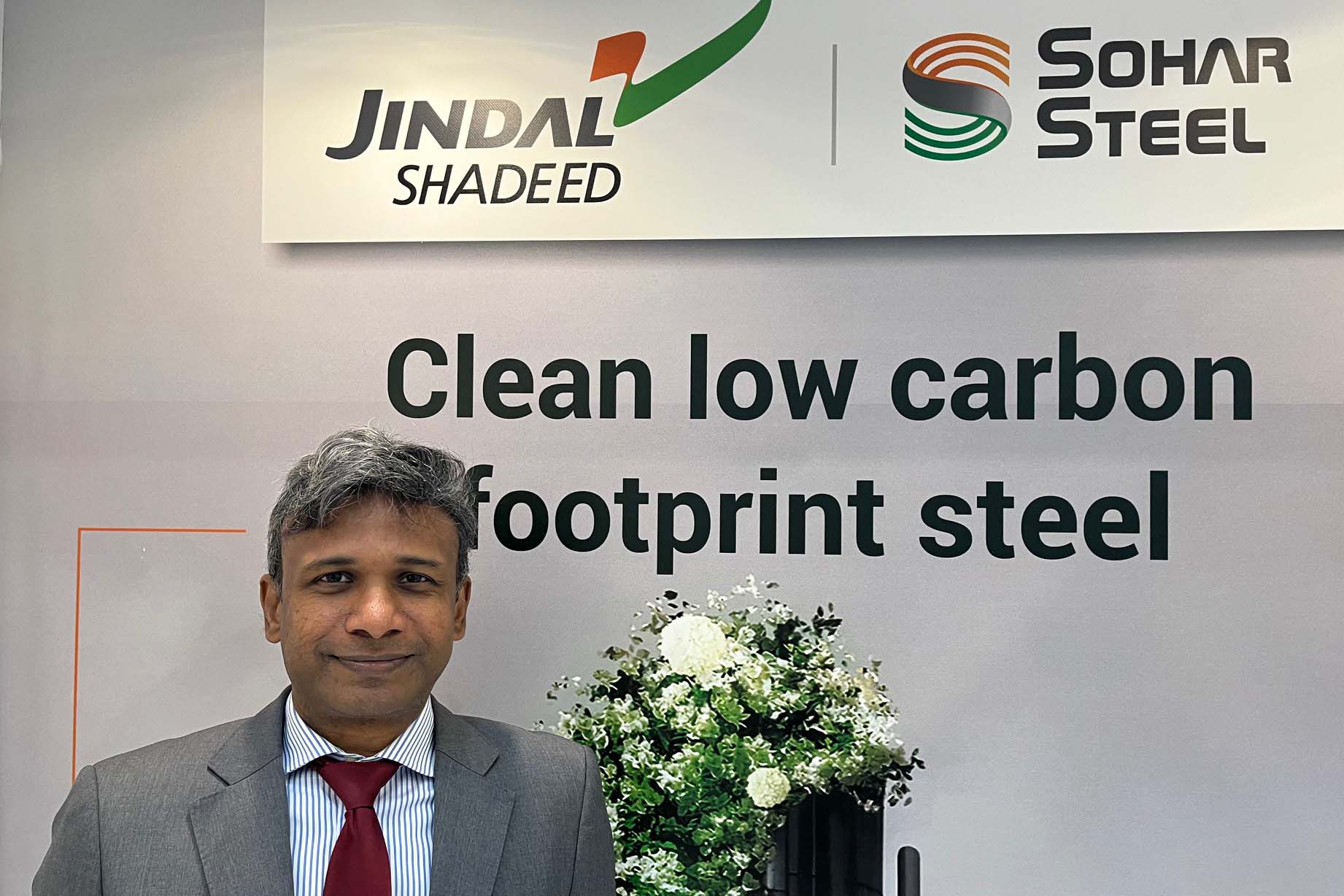What kind of products does JSIS offer?
by Dagmar Dieterle

Interview mit Harssha Shetty, CEO von Jindal Shadeed Iron and Steel (JSIS)
 marketSTEEL: Let´s now talk about products. What kind of products do you offer?
marketSTEEL: Let´s now talk about products. What kind of products do you offer?
As I already mentioned, Jindal is an operating company and we are a primary producer, focussed on the production of low carbon steel. Against a world average of 2.3 tons of carbon dioxide per ton of steel, our steel at SCOPE 3 is already at a level of 1.5 tons carbon dioxide per ton of steel. This is achieved due to our unique innovations in our value chain, notably, we have our own link for HDRI transfer in the plant.
As you probably know, the steel industry can be divided in a pyramid with three layers.
You have the bottom layer, with 70 percent of steel that is produced conventionally. On the next level you have DRI, produced with natural gas, and on the top level you have DRI produced with green energy. We are producing DRI using either natural gas or green energy. Also, in terms of energy efficiency, our consumption of natural gas is already scoring top in the world, measured by a BSC benchmarking from Germany.
 Hence, our efficiency has given us a very low carbon footprint. And as we have our own HDRI in the plant, there is no need for root materials and no awkward moment for the end products.
Hence, our efficiency has given us a very low carbon footprint. And as we have our own HDRI in the plant, there is no need for root materials and no awkward moment for the end products.
marketSTEEL: So, what kind of end products we are talking about? Flat steel?
We are producing long steel products. Now, we are commissioning a new project where we produce wire rods for various applications. Also, we produce rebars for the construction industry, we produce rounds for the seamless tubing industry, where we are one of the largest global suppliers, and we produce value added great pellets.
A particular thing about our new wire rod project is that we are now able to produce Scope 3 steel with a carbon emission of 0.82 tons per ton of steel by using a unique blend of virgin steel from our primary steel and scrap steel. Certain parts of wire rods need primary steel so here is the challenge: Of course, you can achieve a lower carbon footprint by using 100 % scrap. Our carbon footprint for wire rods is indeed unique.
By using our steels, customers can easily save 1.5 tons of carbon per ton of steel. Hence, we don’t need to wait for the CBAM to come into force – and we do not have to wait until 2030. Most customers already have committed to ambitious climate goals. And we are offering a solution right away. And this is not only a steel solution – but a decarbonisation solution in the form of steel.
Photos: marketSTEEL

